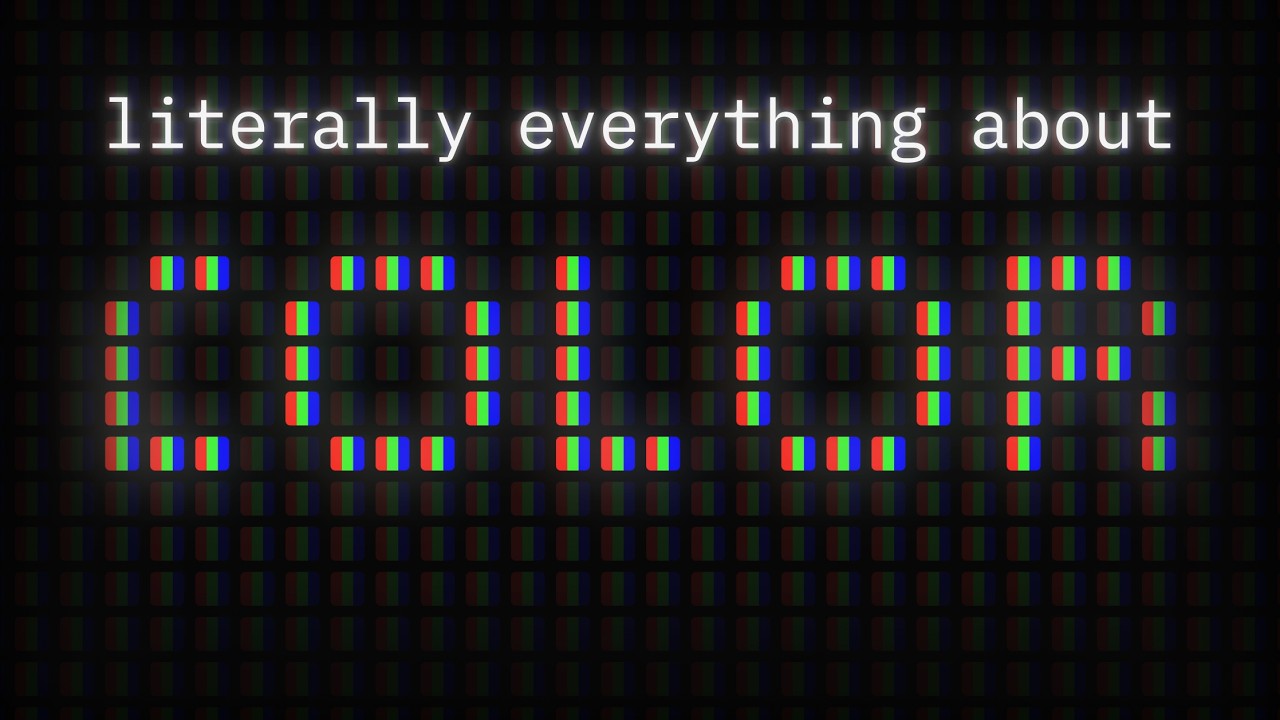What is color? - Colm Kelleher
Summary
TLDRThis script explores the concept of color as a property of light waves, explaining how light's frequency translates into the colors we perceive. It uses the analogy of a cork bobbing in the ocean to illustrate the periodic motion and frequency of waves. The script further explains that objects appear colored because they reflect specific frequencies of light while absorbing others, turning them into heat. The visible spectrum ranges from red, the lowest frequency, to purple, the highest, with all other colors in between. White reflects all colors, while black absorbs them, affecting how we experience heat from different colored objects.
Takeaways
- 🌊 Waves exhibit a repetitive or periodic motion, which is a fundamental characteristic of their behavior.
- 🕒 The period of a wave is the time it takes for a wave to complete one full cycle of motion.
- 🔢 Frequency is the number of waves that pass a point in a given second and is inversely related to the period.
- 🟡 Light behaves as a wave and its frequency is perceived by our eyes as color.
- 👀 Our eyes detect different frequencies of light as different colors, with red being the lowest and purple the highest frequency in the visible spectrum.
- 🎨 The color of an object is determined by the frequency of light it reflects more than others, while the rest is absorbed and converted into heat.
- 🟨 Yellow objects, like a pencil, appear yellow because they reflect yellow light more than other colors.
- 🔵 Blue and purple light hitting an object is absorbed if not reflected, contributing to the object's color appearance.
- ⚫ Black objects absorb all frequencies of light, which is why they can feel hot under sunlight.
- ⚪ White objects reflect all colors of light, which is why they appear white.
- 🎽 Wearing dark colors, like a black Metallica t-shirt, can be uncomfortable on a sunny day due to the absorption of all light frequencies and increased heat.
Q & A
What is a key property of life that is often associated with color?
-One of the most striking properties about life is that it has color, which is a result of the interaction between light and the objects that reflect or absorb it.
Why is it helpful to think about light as a wave to understand color?
-Thinking about light as a wave helps us understand color because color is essentially a measure of the frequency of light waves, which our eyes detect as different colors.
What is the definition of a wave's period?
-The period of a wave is the time it takes for the wave to complete one full cycle of its motion, as illustrated by the example of a cork bobbing up and down in the ocean.
How is the frequency of a wave related to its period?
-The frequency of a wave is the reciprocal of its period. If a wave has a period of 2 seconds, its frequency is 0.5 waves per second, indicating how many waves pass by in one second.
What is the relationship between the frequency of light and color?
-The frequency of light determines its color. Different frequencies correspond to different colors that we perceive in the visible spectrum, with red being the lowest frequency and purple the highest.
Why does a yellow pencil appear yellow when placed under sunlight?
-A yellow pencil appears yellow because it reflects yellow light more than it reflects other colors. The other colors of light hitting the pencil are absorbed and converted into heat.
What happens to the light that is not reflected by an object?
-The light that is not reflected by an object is absorbed, and the energy it carries is transformed into heat.
Why do white objects appear white?
-White objects appear white because they reflect all colors of light, not absorbing any particular frequency, which results in the perception of white.
What is the reason black objects are uncomfortable to wear on a sunny day?
-Black objects absorb all frequencies of light and convert the energy into heat, making them hotter and thus uncomfortable to wear in direct sunlight.
How does the visible spectrum relate to the colors we see?
-The visible spectrum is a continuous band of colors that our eyes can detect, ranging from the lowest frequency (red) to the highest frequency (purple).
What is the significance of the example of the bobbing cork in explaining wave motion?
-The bobbing cork serves as a simple and relatable example to illustrate the concept of periodic motion, which is fundamental to understanding how waves, including light waves, behave.
Outlines

This section is available to paid users only. Please upgrade to access this part.
Upgrade NowMindmap

This section is available to paid users only. Please upgrade to access this part.
Upgrade NowKeywords

This section is available to paid users only. Please upgrade to access this part.
Upgrade NowHighlights

This section is available to paid users only. Please upgrade to access this part.
Upgrade NowTranscripts

This section is available to paid users only. Please upgrade to access this part.
Upgrade NowBrowse More Related Video

How we see color - Colm Kelleher

What is Frequency ? Frequency Explained. What is Hz?

Why questions for kids: How do we see colour? Light and colour science. Physics for children

Pertemuan 1 : Citra Natural dan Warna - Part 1 : Apa itu warna ? Proses terbentuknya citra natural

Natuurkunde uitleg Licht 1: Licht en Kleur

literally EVERYTHING about color ✨simplified✨
5.0 / 5 (0 votes)